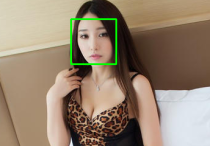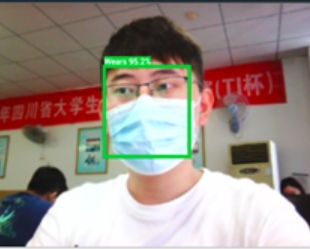python基础三层深度学习网络
#coding:utf-8 #neural network class definition import numpy import scipy.spatial class neuralNetwork: #initialise the neural network def __init__(self,inputnodes,hiddennodes,outputnodes,learninggate): #set number of the inputnodes,hiddennodes,outputnodes self.inodes = inputnodes self.hnodes = hiddennodes self.onodes = outputnodes #link weight matrices,wih and who self.wih = numpy.random.normal(0.0,pow(self.hnodes,-0.5),(self.hnodes, self.inodes)) self.who = numpy.random.normal(0.0,pow(self.onodes,-0.5),(self.onodes, self.hnodes)) #set the learningrate self.lr = learninggate #activation function is the sigmoid function self.activation_function = lambda x:scipy.special.expit(x) pass; #trian the neural network def train(self,inputs_list,targets_list): #convert inputs to 2d array inputs = numpy.array(inputs_list,ndmin = 2).T targets = numpy.array(targets_list,ndmin = 2).T #calculate signals into hidden_layer hidden_inputs = numpy.dot(self.wih,inputs) #claculate the signals emerging from hidden layer hidden_outputs = self.activation_function(hidden_inputs) #calculate signals into final output layer final_inputs = numpy.dot(self.who,hidden_outputs) #calculate the signals emerging from final out_layer final_outputs = self.activation_function(final_inputs) #error is the (target-actual) output_errors = targets - final_outputs #hidden layer error is the output_errors, split by weights, recombined at hidden nodes hidden_errors = numpy.dot(self.who.T,output_errors) #update the weight for the links between the hidden and output layers self.who += self.lr * numpy.dot((output_errors * final_outputs * (1.0 - final_outputs)),numpy.transpose(hidden_outputs)) #update the weights for the links between the input and hidden layers self.wih += self.lr * numpy.dot((hidden_errors * hidden_outputs * (1.0 - hidden_outputs)), numpy.transpose(inputs)) pass #query the neural network def query(self,inputs_list): #convert inputs list to 2d array inputs = numpy.array(inputs_list, ndmin=2).T #calculate signals into hidden layers hidden_inputs = numpy.dot(self.wih,inputs) #calculate the signals emerging from hidden layers hidden_outputs = self.activation_function(hidden_inputs) #calculate signales into final output layers final_inputs = numpy.dot(self.who, hidden_outputs) #calculate the signals emerging from final output layer final_output = self.activation_function(final_inputs) return final_output pass
以下是使用TensorFlow优化的简单三层神经网络
#定义方法添加层数
import tensorflow as tf
def add_layer(input_x,in_size,out_size,activation_function=None):
weights=tf.Variable(tf.random_normal([in_size,out_size]))
bias=tf.Variable(tf.zeros(out_size)+0.1)
wx_plus_b=tf.matmul(input_x,weights)+bias
if activation_function is None:
outputs=wx_plus_b
else:
outputs=activation_function(wx_plus_b)
return outputs
import numpy as np
import matplotlib.pyplot as plt
%matplotlib inline
x_data=np.linspace(-1,1,300)[:,np.newaxis]#增加一个维度,变成二维了
noise=np.random.normal(0,0.1,x_data.shape)
y_data=np.square(x_data)-0.5+noise
xs=tf.placeholder(tf.float32,[None,1])
ys=tf.placeholder(tf.float32,[None,1])
#############数据准备#####################
hidden_layer_out=add_layer(xs,1,10,activation_function=tf.nn.relu)
final_layer_out=add_layer(hidden_layer_out,10,1,activation_function=None)
###################模型构造########################
loss=tf.reduce_mean(tf.reduce_sum(
tf.square(y_data-final_layer_out),
reduction_indices=[1]#向右压缩维度,变成一列
))
optimizer=tf.train.GradientDescentOptimizer(0.01)
train_op=optimizer.minimize(loss)
init=tf.global_variables_initializer()
fig=plt.figure()
ax=fig.add_subplot(1,1,1)
ax.scatter(x_data,y_data)
plt.ion()
plt.show
with tf.Session() as sess:
sess.run(init)
for i in range(5000):
#train
sess.run(train_op,feed_dict={xs:x_data,ys:y_data})
if i%100==0:
try:
ax.lines.remove(lines[0])#抹去上一条线
except Exception:
pass
prediction_value=sess.run(final_layer_out,feed_dict={xs:x_data})
lines=ax.plot(x_data,prediction_value,'r-',lw=3)#lw线宽为3
plt.pause(0.1)
#print(sess.run(loss,feed_dict={xs:x_data,ys:y_data}))





